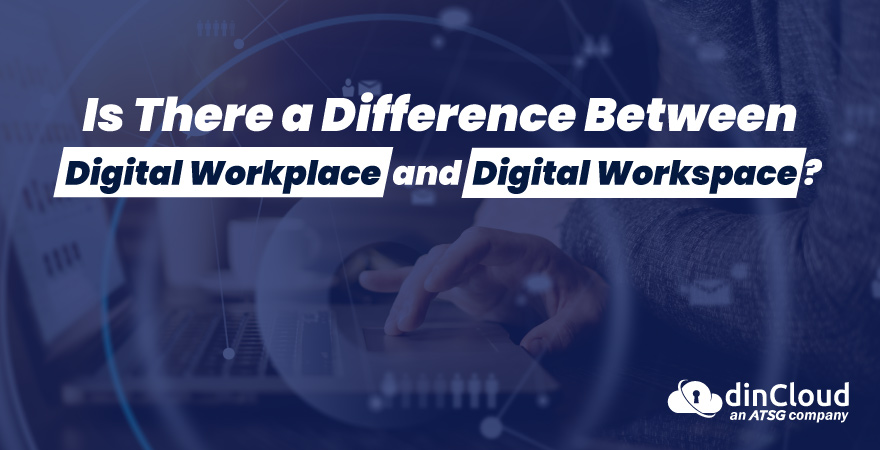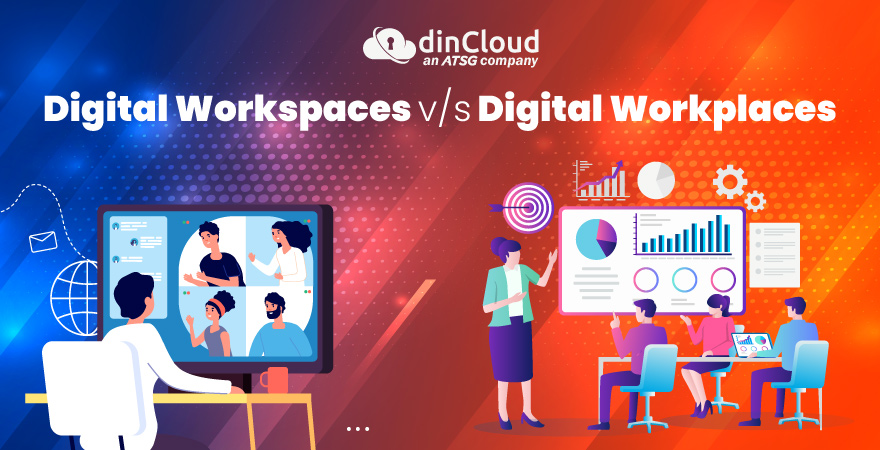It hasn’t been long since the World Health Organization (WHO) declared Covid-19 a global pandemic, and everything changed overnight. People waited for this catastrophe to end with “bated breath”. However, everyone realized that even after the pandemic ends, our lives in general, and workplaces in particular, would not go back to the “old” normal. We say that because if there is one legacy that Covid-19 has left behind, it is remote work.
All of a sudden, businesses became overwhelmed by the huge influx of remote-based work. Enterprises realized that this new work-from-home (WFH) model is not just a “fad”, as the market research and statistics overwhelmingly favor remote-based work being a permanent trend now.
These hybrid working trends propelled businesses to think differently about their digital transformation strategies. For them, innovations in the digital workplace seemed like a good place to start, primarily because it can holistically change the way the IT department offers employees seamless access to services, data, tools and productivity platforms.

In layman’s terms, both digital workplace and digital workspace might seem like interchangeable concepts. However, businesses and IT decision-makers must know the difference between the two, in order to provide flexible IT support to their employees.
Defining the Digital Workplace
The digital workplace is a “new and improved” version of traditional offices, where an enterprise creates this digital environment for all its employees, so they can talk to their peers, discuss ideas, collaborate and conduct meetings over “digital channels”. It aims at creating numerous opportunities for employees by providing effective ways of working.
As for employees working from home, the digital workplace becomes a common meeting place that is used for seamless collaborations, without any disruptions. An effective digital workplace streamlines and improves the productivity and agility of the employees, irrespective of their physical location.
Digital innovations, such as Customer Relationship Management (CRM) software, Cloud desktops / Cloud-Based Hosted Virtual Desktops, Remote Collaboration tools, etc. are key building blocks of a robust digital workplace.
Defining a Digital Workspace
Traditionally, workspace could be your office cubicle, your personalized desk, or your private office with a view, where you actually worked. By adding the digital aspect to the workspace, we refer to the digital tools required to get the job done, like laptops, calendars, smartphones, software, etc.
Digital workspace gives employees anywhere, anytime, and on any device access to various applications and IT resources. Digital workspace tools do not have to be identical for every employee and depend on the job’s role.
Digitally powered workplaces and workspaces provide a solid ground for businesses to accomplish a successful digitalization of the workplace.

Digital Workspaces v/s Digital Workplaces
Just a few years ago, the focus of businesses was primarily on improving the physical workplaces for employees, which was a common unifying factor that kept everyone on the same page.
Leading corporations invested a lot in providing “creature comforts” within the physical workplace, which kept employees in high spirits during their work day. Google even provided ergonomically designed “bunk beds” to employees in the workplace, where they could take a nap.
Today, most businesses operate in a combination of physical and digital workplaces. Enterprises got a “wake-up call” post-pandemic when they realized that in the absence of a physical workplace, disparate applications were no longer enough to collaborate and innovate, especially amidst disruptions.
In this section, we have discussed, in detail, the primary differences between the concepts of digital workplace and digital workspace.
- A digital workplace is the sum of all the infrastructure, tools, and technologies a company puts in place to execute its processes and workloads in the most effective as well as efficient manner. Digital Workplace is an all-encompassing concept and includes a host of digital technologies and solutions that make it all happen.
- The digital workspace, on the other hand, is a subset of the Digital Workplace, and the most critical piece of the puzzle. The digital workspace includes all those specific tools, platforms, software, and other digital solutions that directly enable employees to get their jobs done in the most efficient and seamless manner.
- Now, let us clarify both these concepts with the help of a real-life example. Let’s say an enterprise moves over to a fully digitalized, Cloud Computing environment to support its fully remote workforce. Within this cloud environment, there are Cloud Hosted Virtual Servers, Virtual Databases, and Virtual Desktops.
- Out of these components, the Virtual Servers and Virtual Databases will be classified as being a part of the overall Digital Workplace. The Virtual Desktops, on the other hand, will be classified as the Digital Workspace, and will further be hosting specific tools like accounting software, a calling solution, a chat platform, and so on. The Digital Workspace will act as an active replacement for the physical office environment, where an employee simply gets up from the workstation, and walks over to a colleague to clarify something.
- Both Digital Workplaces and Digital workspaces are flexible and can be changed as per evolving needs or circumstances. In other words, they have virtually replaced the physical workplace and workstations.
- One of the major purposes companies focus so much on the digital workplace is to improve the employee experience (EX) through various digital solutions. Companies can only achieve this by gathering insights and employee feedback about the digital workspace, and how effective is it in fulfilling the day-to-day productivity expectations of the employees.
Conclusion
If the tectonic shift in the way we work today has taught us one thing, it is that life is an experience, and so is our work. A superior Digital Employee Experience (DEX), and a healthy remote work culture go hand in hand. This is the reason why a lot of modern enterprises are investing more capital and resources to improve and expand their digital workplaces, and digital workspaces.
Needless to say, both digital workplace and digital workspace are absolutely vital for businesses, because not only can they help businesses keep up with the evolving trends and requirements, but also fulfill the needs of today’s tech-savvy hybrid workforce.
If you want to improve the productivity and agility of your enterprise, you can contact dinCloud, an ATSG company, for its Hosted Virtual Desktop (dinHVD) solutions. Our dinHVD delivers a seamless user experience and is ideally suited for hybrid and fully remote employees.


